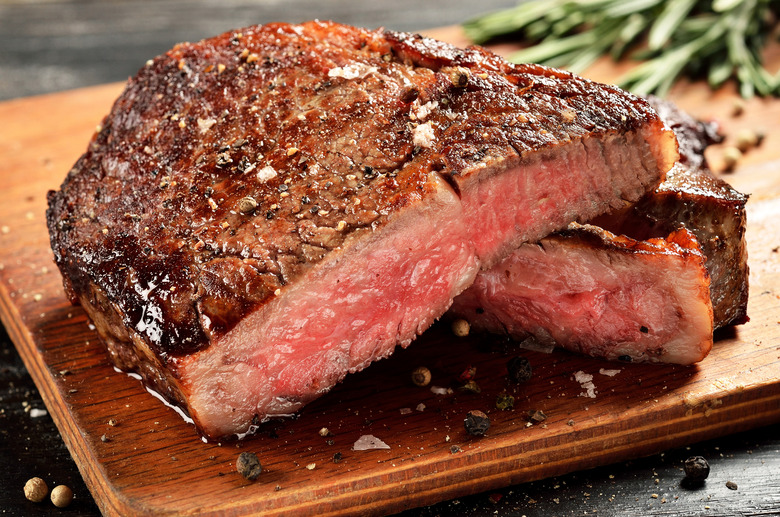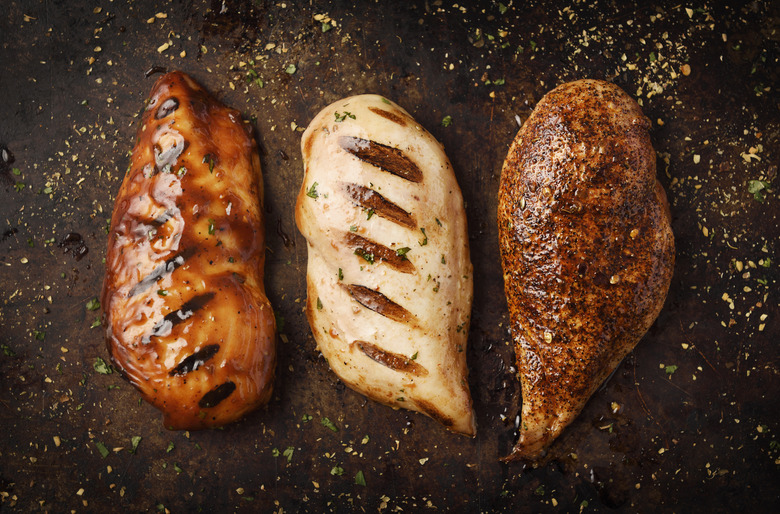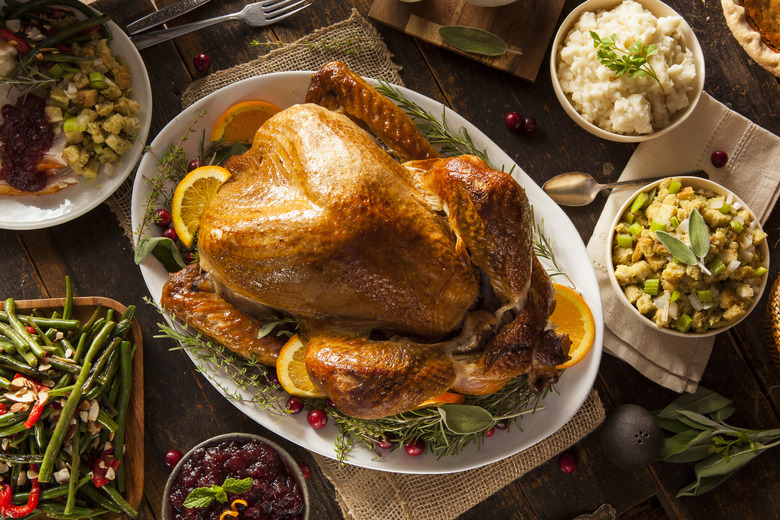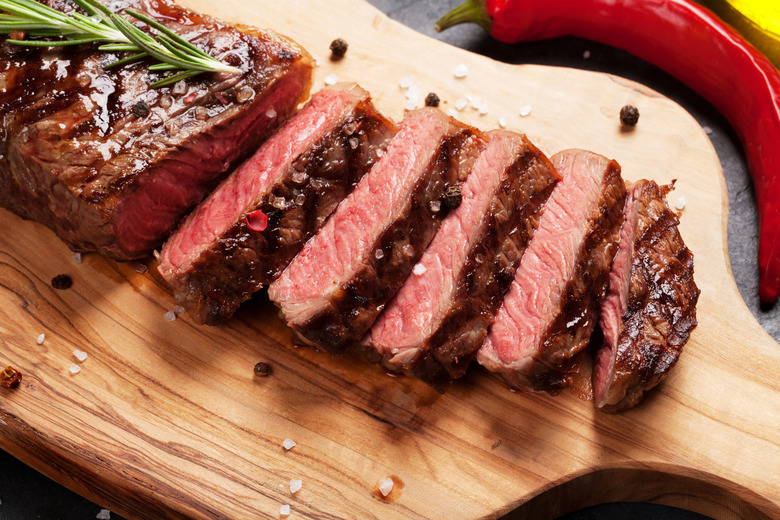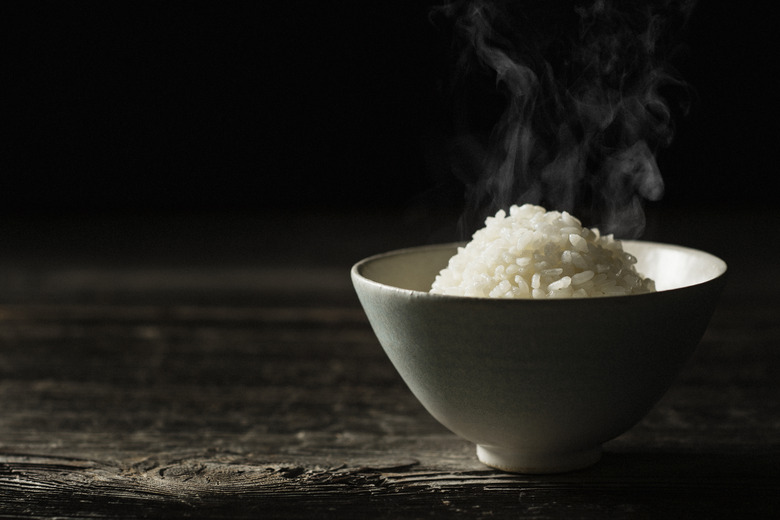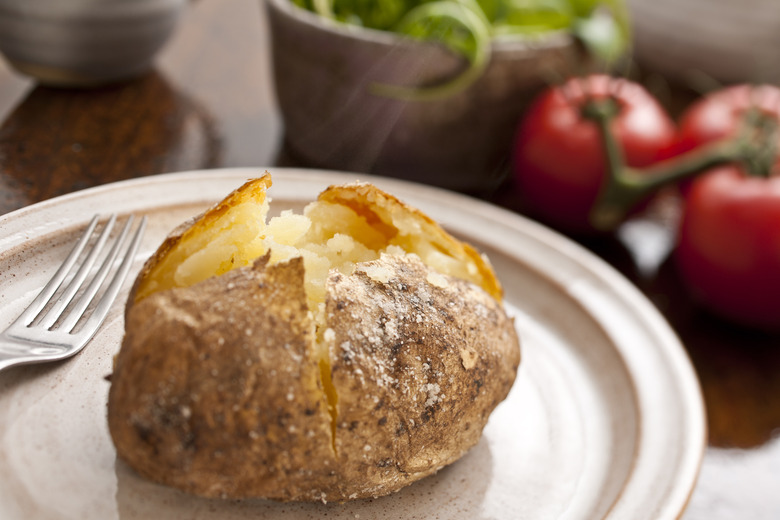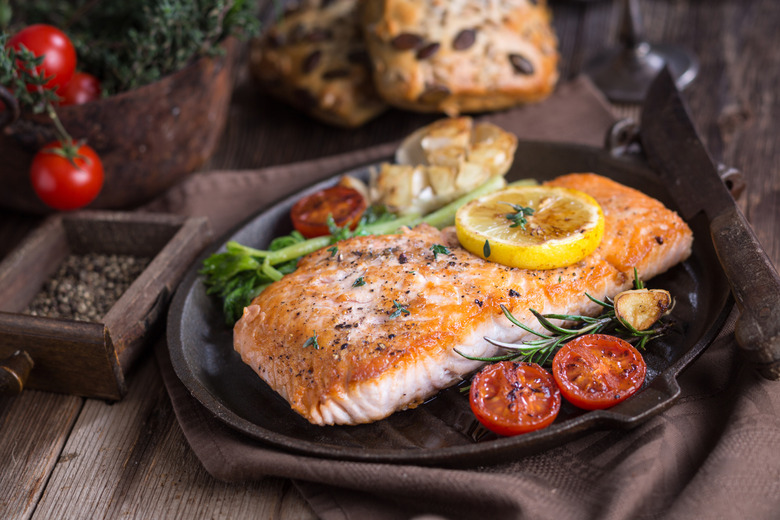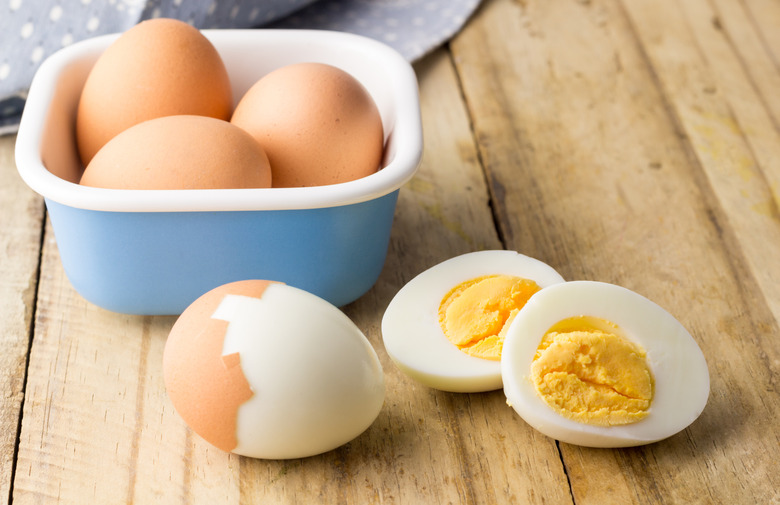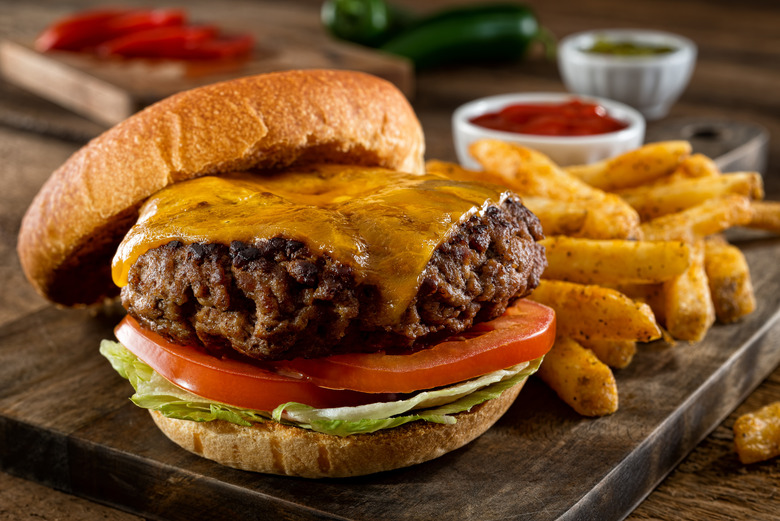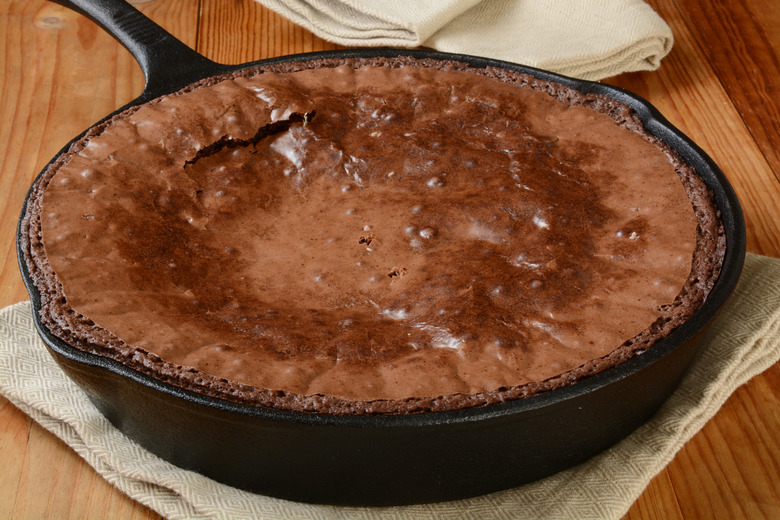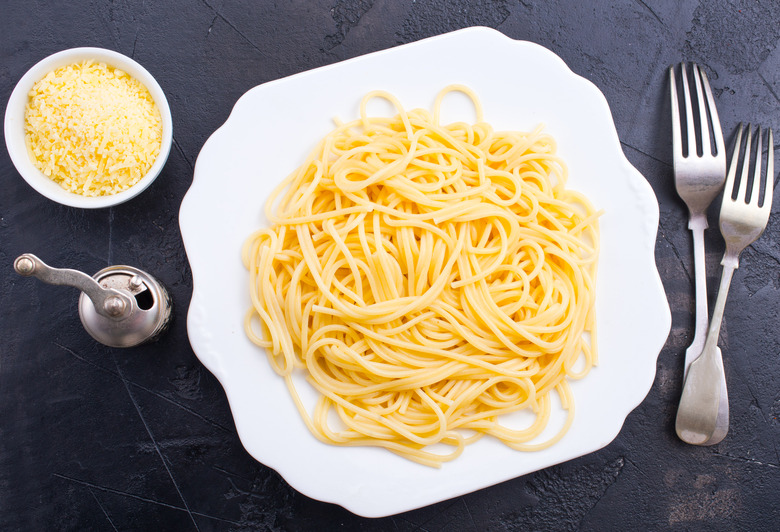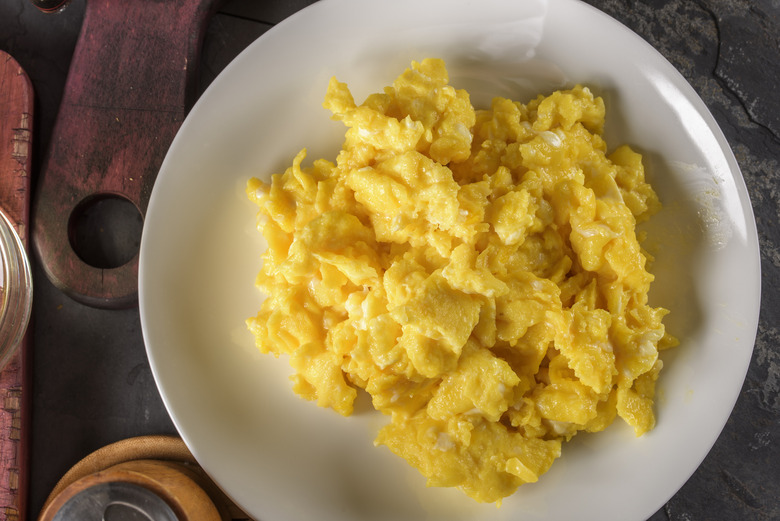How To Cook Chicken, Turkey, Steak And 12 Other Foods Correctly
No matter your level of culinary expertise, mistakes in the kitchen are inevitable — whether you are a novice cook just starting down the path of fire and flavor or have been in the kitchen since you were knee-high to a grasshopper. It's not easy to know how to cook like a chef. There are, however, a few foods people tend to cook incorrectly over and over again. It's time to break those bad habits and start cooking the best version of these foods.
Chicken breasts
If you think boneless, skinless chicken breast is boring and bland, chances are you're just cooking it wrong. The biggest mistake most people make is overcooking chicken breast, so knowing how long to cook is halfway to knowing the secrets to perfectly cooked chicken. In order to avoid food poisoning, the internal temperature of chicken should be 165 degrees no matter the method. For best results, use a food thermometer. This temperature will also give you tender, juicy meat. Generous seasoning is also the way to go when dealing with chicken, so don't be afraid of using salt, pepper and other techniques for delicious chicken — and if you're feeling adventurous, why not try a quick brine?
Turkey
Knowing how to choose and cook the perfect turkey really isn't that hard, but it intimidates a lot of cooks every holiday season. To avoid dry turkey, resist the desire to baste your bird while it's in the oven. Every time you open your oven door, you lose heat, leading to an overall longer cooking time and dry meat. Also avoid using pop-up timers to make sure your turkey has cooked to temperature. The only way to tell a turkey is done is to use a food thermometer and make sure it reaches a temperature of 165 degrees at the innermost part of the thigh and in the thickest part of the breast. Make sure you let your turkey rest after roasting for at least 45 minutes and avoid these other common turkey roasting mistakes.
Steak
There are a lot of steakhouse secrets only the experts know (and can execute), but it's still possible to learn how to cook a perfect steak at home. The best way is to cook it in a cast-iron skillet, according to America's Test Kitchen. Season steaks generously with kosher salt and pepper and let them sit out and come to room temperature for 30 minutes. As your steak comes to room temperature, place your cast-iron skillet in the oven and set the oven temperature to 500 degrees, preheating your pan. Just be sure not to put a cold pan in a hot oven — that's a surefire way to destroy your cast iron. Then, take your skillet out of the oven and place it on a burner over medium-high heat, adding 2 tablespoons of oil. Cook your steaks for two minutes on each side, then reduce the heat to medium-low. Turn your steaks every two minutes until they reach an internal temperature of 125 degrees for medium rare. Top with butter mixed with garlic and herbs for an extra kick of flavor.
Rice
The difference between rice grains, red rice, white rice and black rice and how to cook them correctly is one of the most common grocery questions. Indeed, cooking instructions vary for each type of rice, and getting that water-to-rice ratio wrong can lead to rice that is simultaneously mushy and burnt. America's Test Kitchen found that every type of rice needs a 1:1 ratio of rice to water. Add it all to the pot at once and cover, but keep a close eye on your rice because cooking times can vary for each type of rice, each pot and each stovetop.
Baked potatoes
When done properly, baking is one of the absolute best ways to prepare potatoes. But if you bake your potatoes wrapped up in foil, then you are selling yourself short. To get the most out of your baked potatoes, preheat your oven to 450 degrees, and while it's getting rip-roaringly hot, prep the potatoes. You want to use good baking spuds — russets are ideal. Wash each potato, prick it all over with a fork and then dip it in a solution of 1/2 cup water with 2 tablespoons of salt dissolved in it. Bake the salt-covered potatoes on a lined baking tray for about an hour. For an extra crisp skin, brush with olive oil when 10 minutes of cooking time remain. Enjoy with a liberal amount of butter and your favorite toppings.
Bacon
It seems like there are a million different ways to cook bacon properly, but which is the best? The best method to cook bacon involves a frying pan and water, America's Test Kitchen found. First, place your bacon in the pan, then add just enough water to cover the bottom of the pan before cooking the bacon over high heat. When the water has boiled, lower the heat to medium, and once the water has evaporated, reduce the heat to low. Continue to cook the bacon until crispy. This method ensures perfectly rendered fat as well as evenly cooked, crisp bacon.
Salmon
If your filet of salmon comes with a belly flap (that thinner part), this can lead to overcooking on that portion of the fish when roasting in the oven. To avoid this, simply fold the belly flap over and secure it with a toothpick. If you're cooking outdoors, pat your salmon dry, brush it with oil, season it and follow the rest of these steps to grilling the perfect salmon.
Hard-boiled eggs
There are a lot of great reasons to eat an egg every day, and hard-boiled eggs are a staple in many households. To make the best hard-boiled eggs possible, stick to some easy guidelines. Add your eggs to a pot so they are in a single layer and cover them with cold water. Over high heat, bring the eggs to a boil. Once the water is boiling, turn off the heat, cover the pot and set a timer for 12 minutes for large eggs. Once the timer goes off, drain the water from the pot and place your eggs into a bath of ice-cold water. After cooking them perfectly, make sure you know the best way to peel hard-boiled eggs.
Burgers
There are a lot of things that can go wrong when cooking burgers — from buying the wrong kind of meat to over-seasoning, overworking the mixture and forming it incorrectly — and that's before you even begin cooking. The most important thing to remember when cooking burgers either on the grill or in a cast-iron pan is to make sure you are using a nice, fatty meat blend and that you aren't fussing over the burgers and turning them every few minutes or smashing them onto the cooktop. You want to leave them alone and allow a tasty crust to form. Apply that newfound cooking skill to the best burger recipes and enjoy.
Frozen food
Defrosting food is an integral part of cooking. And one of the best ways to prevent food poisoning is to make sure you defrost your food properly. According to the USDA, you should never thaw food on the counter, in a cold garage or outside on the porch. The most food-safe way to thaw frozen food is in the refrigerator. Small items (like a single chicken breast) may defrost overnight, but most foods (like a pork tenderloin) require a day or two. If you find yourself in a pinch, you can also safely defrost food using other methods, like a cold-water bath or a microwave. It's best to thaw meat before cooking — failing to do so can lead to uneven cooking. However, you can cook frozen food. Just be sure to note it will take about one and a half times as long to cook.
Brownies
If you're making your brownies using a box mix, it's time to pivot to making them from scratch. A chewy, cakey brownie recipe requires little more than ingredients you should always keep stocked in your pantry (butter, chocolate, sugar, eggs, vanilla, flour, cocoa powder). And while it's best known for its ability to sear steaks, a cast-iron pan makes the most delicious brownies, with crisp edges and gooey centers. And if you didn't know that, you probably didn't know you can make these other dishes in a cast-iron pan.
Mashed potatoes
You may think that you can just mash any ol' potato, but you actually want to start with a super starchy spud like a russet (as opposed to a waxy potato like Yukon Gold), as these potatoes break down more easily. After peeling and slicing your potatoes, put them in a pot with cold, salted water. Then simmer your spuds until they're soft when pierced with a fork. Drain the water and return the potatoes to the pot, ideally putting them through a ricer. Finally, add your butter and cream and mash away for one of the best comfort foods on Earth.
Pasta
For something so simple and cheap, pasta sure is hard to get right. Use a large pot and boil salted water first. About 4 quarts of water will cook 1 pound of pasta. Add the pasta to the pot once the water is boiling and give it a stir to keep the pasta from sticking. The box times are usually good indicators of cooking time, so follow those instructions, but taste along the way to make sure it's cooked to your liking. Adding olive oil to your water and not reserving some of that precious, starchy pasta water are just some of the ways you are probably cooking your pasta all wrong.
Scrambled eggs
Gordon Ramsay, Ree Drummond and other celebrity chefs have their own methods for scrambled eggs, and the right or wrong way to make them can all come down to personal preference. A few tips for making the perfect scrambled eggs, however, can help you achieve the best breakfast. Vigorously whisk your eggs until they achieve a frothy texture, use a gas stove instead of an electrical one for even heating, use a nonstick skillet with butter over medium-low heat and add any mix-ins or seasonings after your eggs are done.
Brussels sprouts
Brussels sprouts have a reputation for being stinky and gross because home cooks have been boiling them and steaming them. The best way to cook these veggies, however, is to roast them. To make the best Brussels sprouts, mix them in a bowl with a few tablespoons of olive oil, salt, pepper and garlic powder. Then, place them cut-side down in a single layer on a lined baking tray and into a 375-degree oven for 35 to 40 minutes, checking them and stirring them halfway through. In the last 15 minutes, drizzle over a few tablespoons of good-quality maple syrup and continue roasting until the leaves turn a lovely golden-brown shade. If you still feel a need to steam your Brussels after reading this, chances are you're also making these other common cooking mistakes.
More from The Daily Meal:
How to Chop an Onion Without Crying
A Step-by-Step Guide to Cooking the Perfect Ham
Unexpected Ingredients That Go Great with Eggs
